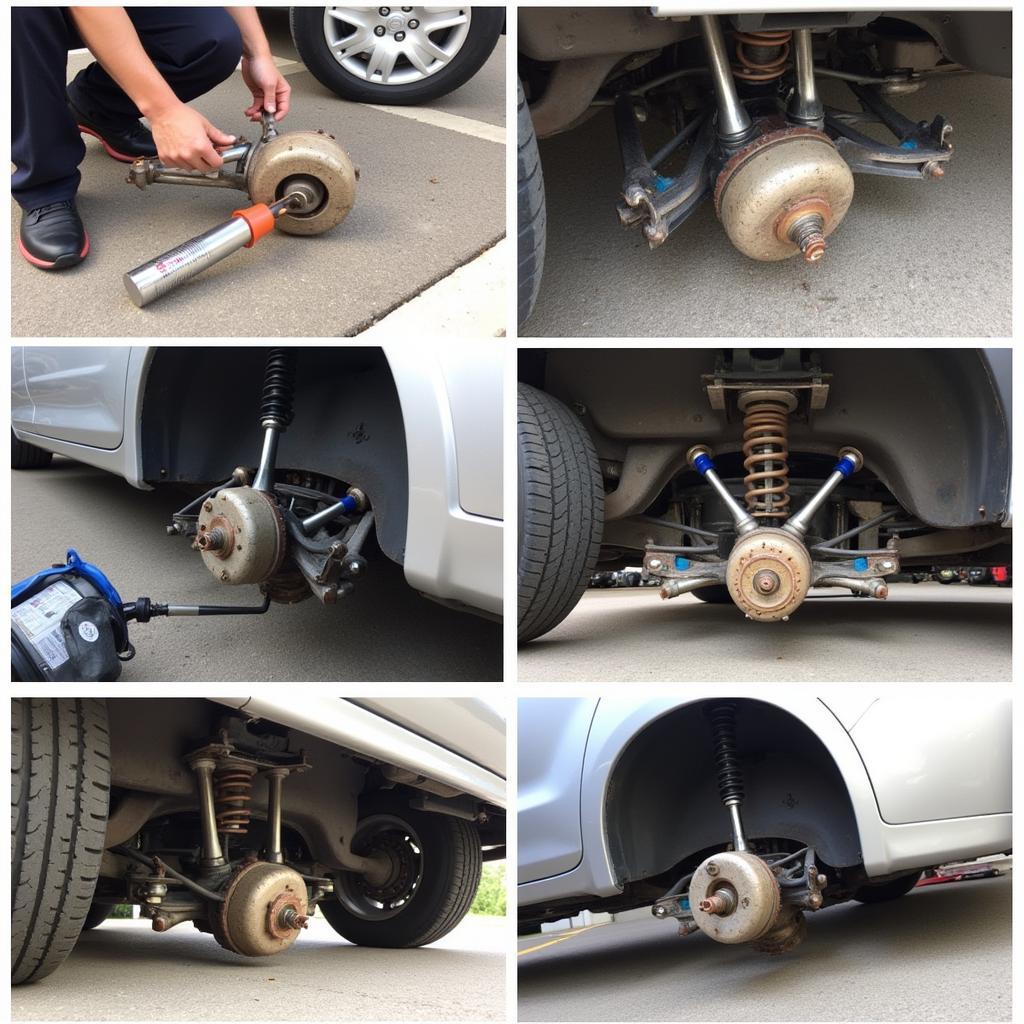Dealing with a cement scratch on your car can be a real pain. Whether it’s a minor scuff or a deeper gouge, that unsightly mark can detract from your car’s appearance and even affect its resale value. This guide will walk you through effective methods for How To Fix Cement Scratch On Car, from simple DIY solutions to more professional approaches.
Understanding the Severity of the Scratch
Before you start fixing a cement scratch, it’s crucial to assess the damage. A light surface scratch might only affect the clear coat, while a deeper one could penetrate the paint and even reach the primer. Identifying the depth helps determine the right approach. Run your fingernail across the scratch. If it catches, the scratch is likely deeper than the clear coat.
DIY Solutions for Minor Cement Scratches
For minor scratches that haven’t penetrated the paint, you can often fix them yourself using readily available products.
- Wash and Dry the Affected Area: Thoroughly clean the scratched area with car wash soap and water to remove any dirt or debris that could further scratch the paint during the repair process. Dry the area completely with a microfiber towel.
- Apply Rubbing Compound: A rubbing compound is a mild abrasive that can remove light scratches and restore shine. Apply a small amount to a clean microfiber cloth and rub it gently onto the scratch using circular motions.
- Buff and Polish: After the rubbing compound, use a polishing compound to further refine the surface and remove any swirl marks left by the rubbing compound. This will restore the paint’s gloss and shine.
- Waxing: Once the scratch is removed, apply a coat of wax to protect the repaired area and enhance the shine.
Professional Repair for Deeper Scratches
If the scratch is deep and has gone through the paint, DIY methods might not be enough. In these cases, it’s best to consult a professional auto body shop.
How a Professional Fixes Cement Scratches
Professionals have the tools and expertise to handle deeper scratches and ensure a seamless repair. They might use techniques like wet sanding, repainting the affected area, and clear coat application to restore the car’s original finish.
“Deeper scratches require a more intricate approach,” says John Miller, an experienced auto body technician at Miller’s Auto Repair in San Antonio. “We often use specialized tools and techniques to match the paint perfectly and ensure a flawless repair.”
Preventing Cement Scratches
Prevention is always better than cure. Here are some tips to avoid cement scratches in the first place:
- Park Carefully: Avoid parking too close to walls or other structures that could scratch your car.
- Be Mindful of Surroundings: Pay attention to your surroundings when driving or parking, especially in tight spaces.
- Use Protective Films: Consider applying paint protection film to vulnerable areas like bumpers and door edges.
How to Identify a Cement Scratch
Cement scratches often appear as whitish or grayish marks on the car’s paint. They can be dull and rough to the touch.
“A telltale sign of a cement scratch is its light color and rough texture,” explains Maria Garcia, a seasoned auto detailer at Garcia’s Auto Detailing. “Unlike other types of scratches, cement scratches often leave a distinct residue that’s easily identifiable.”
Conclusion
Fixing a cement scratch on your car depends on the severity of the damage. While minor scratches can be addressed with DIY methods, deeper ones require professional attention. By understanding the nature of the scratch and taking appropriate action, you can restore your car’s appearance and protect its value. For expert advice or assistance with car repairs, feel free to contact us at AutoTipPro at +1 (641) 206-8880 or visit our office at 500 N St Mary’s St, San Antonio, TX 78205, United States.
FAQ
- Can I use toothpaste to remove a cement scratch? While toothpaste can sometimes remove very superficial marks, it’s not recommended for cement scratches as it can be abrasive and damage the paint further.
- How much does it cost to fix a cement scratch professionally? The cost varies depending on the severity of the scratch and the type of repair needed. It’s best to get a quote from a reputable auto body shop.
- Can I prevent cement scratches completely? While complete prevention is difficult, taking precautions like careful parking and using protective films can significantly reduce the risk.
- What’s the difference between a rubbing compound and a polishing compound? Rubbing compound is more abrasive and designed to remove scratches, while polishing compound is finer and used to restore shine and remove swirl marks.
- Is it necessary to wax my car after fixing a cement scratch? Waxing is highly recommended after fixing a scratch as it provides a protective layer and enhances the shine.
- How often should I wax my car? Waxing every three to six months is generally recommended to maintain the paint’s protection and shine.
- Can I use a touch-up paint pen for a deep cement scratch? Touch-up paint pens are better suited for small chips and scratches. Deeper scratches often require professional repair for optimal results.





Leave a Reply